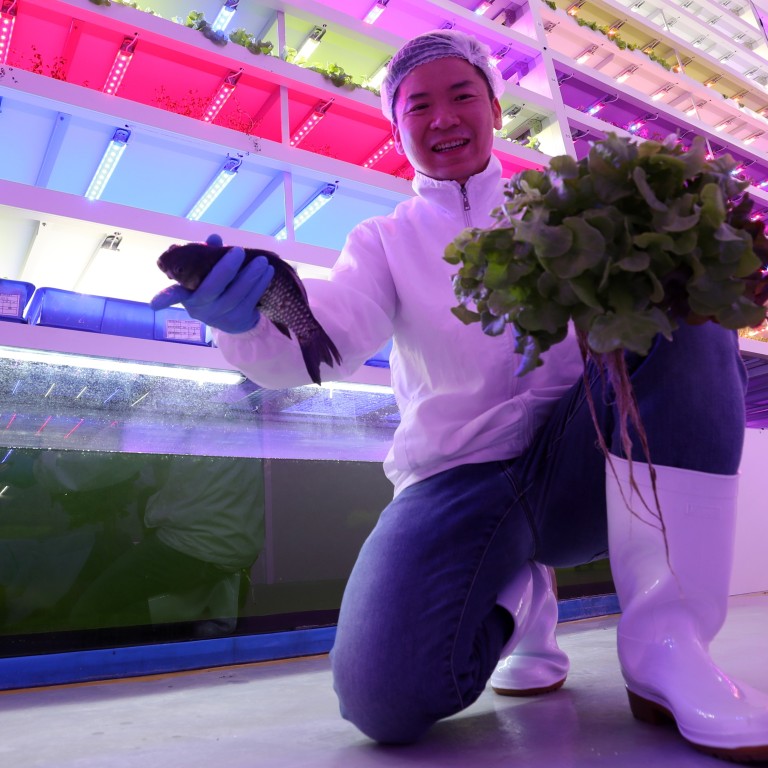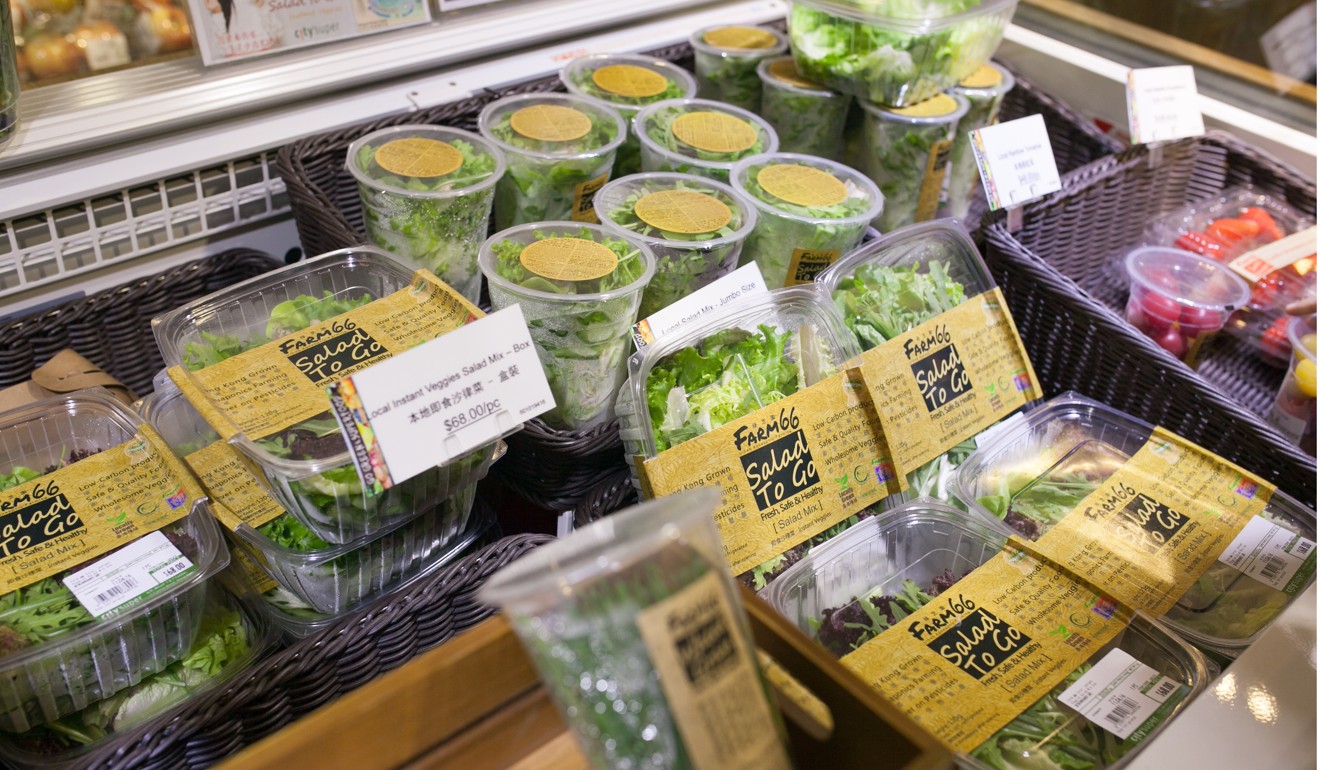
‘Farming 4.0’: in space-starved Hong Kong, the future of agriculture may be in high-rise buildings, and hi-tech
- An old factory building in Tai Po is using ‘vertical farming’ to turn a 10,000 sq ft space into one the size of a football field.
- By replacing shovels and hoes with computers and drones, the operation only needs four farmers
A hi-tech vegetable farm in Hong Kong’s Tai Po district is thriving inside a converted factory building, and produces four tonnes of lettuce, wild rocket, endive and cabbage for salads each month.
At Farm66, workers in their 20s and 30s tend to neat rows of racks, each 30cm tall and 10 tiers high, filled with potted greens lit by low-energy light-emitting diode (LED) lamps and connected to fish tanks on the floor.
Instead of shovels and hoes, they work with computers and drones.
“We farm with technology, not ploughs,” said the vertical farm’s co-founder, Gordon Tam Chi-ho, who is in his 30s. “This is farming 4.0.”
Want to make manufacturing in Hong Kong great again? Give us space
The 20,000 sq ft space is air conditioned and fitted with sensors which check the temperature, humidity and height of the vegetables to make sure the environment is kept stable for the growth of greens.

Once a day, a drone flies over the racks to inspect the vegetables. If some are too short, a technician in a control room will adjust the racks remotely to move the plants closer to the LED lamps.
The plants are watered automatically using the fish tanks. Carp reared in the tanks produce the waste that becomes organic fertiliser for the vegetables.
Farm66 offers a glimpse of the future of farming by harnessing technology and using less space than traditional farming, long regarded a sunset industry in Hong Kong.
Inside a cockroach farming revolution that could cure cancer, compost waste – and shake up menus
Primary industries, mainly comprising farming, fishing, mining and quarrying, accounted for HK$502 million (US$64 million) last year, a tiny fraction of the city’s total gross domestic product of HK$2.65 trillion.
But Tam, who is optimistic about the prospects for aqua-farming, said: “Hong Kong is a service-based city, but we still need healthy food. This is a viable business in Hong Kong because of demand for healthy produce and the growing awareness of food safety.”

Tam had been troubled by allergies to metals and pesticides in vegetables when he and his two partners – Billy Lam Chi-yeung and Terry Chau Tak-hung – founded Farm66 in 2013.
They started in an old industrial building in Chai Wan before moving in June this year to premises 10 times larger at Tai Po Industrial Estate. The current property is part of the Hong Kong Science and Technology Parks Corporation’s revitalised precision manufacturing centre.
Setting up the vertical farming project cost more than HK$10 million, Tam said, with investment coming from an undisclosed angel fund.
Pearl farming in Hong Kong: enthusiasts restock oyster beds in city waters to revive a 1,000-year-old industry
The farm currently uses about half of its available space. When fully operational, output is expected to rise to about 16 tonnes a month, or 200 tonnes a year.
As the vegetables are grown in a tightly controlled ecosystem, they grow faster than outdoors, do not need pesticides and are ready to eat upon harvesting.

Tam, who trained as an architect in the United States and studied sustainable urban development in Hong Kong, said innovation had made farming more viable and less labour intensive.
Vertical farming using tiered racks means 10,000 sq ft of space can expand to become an area the size of a football field.
“We apply computer science and technology to the growing process, and that’s why we have only four people handling operations,” he said.
The future of farming: Japan goes vertical and moves indoors
Technology also allows the company to overcome the lack of sunlight indoors. The farm uses different types of LED lamps of varying wavelengths – for example, red LED light to help the plants grow taller and blue to encourage thicker, bigger leaves.
“Our biggest enemies are bacteria and insects – that’s why the growing areas are restricted areas and we keep track constantly of the data collected by our sensors,” Tam said.

Funding and space remain challenges too. “Raising angel funds and finding a sizeable space in Hong Kong are not easy,” he said. Rent accounted for 40 per cent of costs, labour 30 per cent, research and development 10 per cent and the rest went on utility bills.
To make the business more financially viable, he decided not to grow mass market greens such as choi sum or bak choi, which sell for about HK$12 for two catties (1.2kg).
Instead, the farm grows higher-priced salad greens which it packages in boxes sold for between HK$25 per 30 grams to about HK$68 for 120 grams.
Its vegetables, which are on sale at City’super, will soon also be available in other supermarkets and about 10 vending machines to be set up in residential clubhouses and office buildings.

